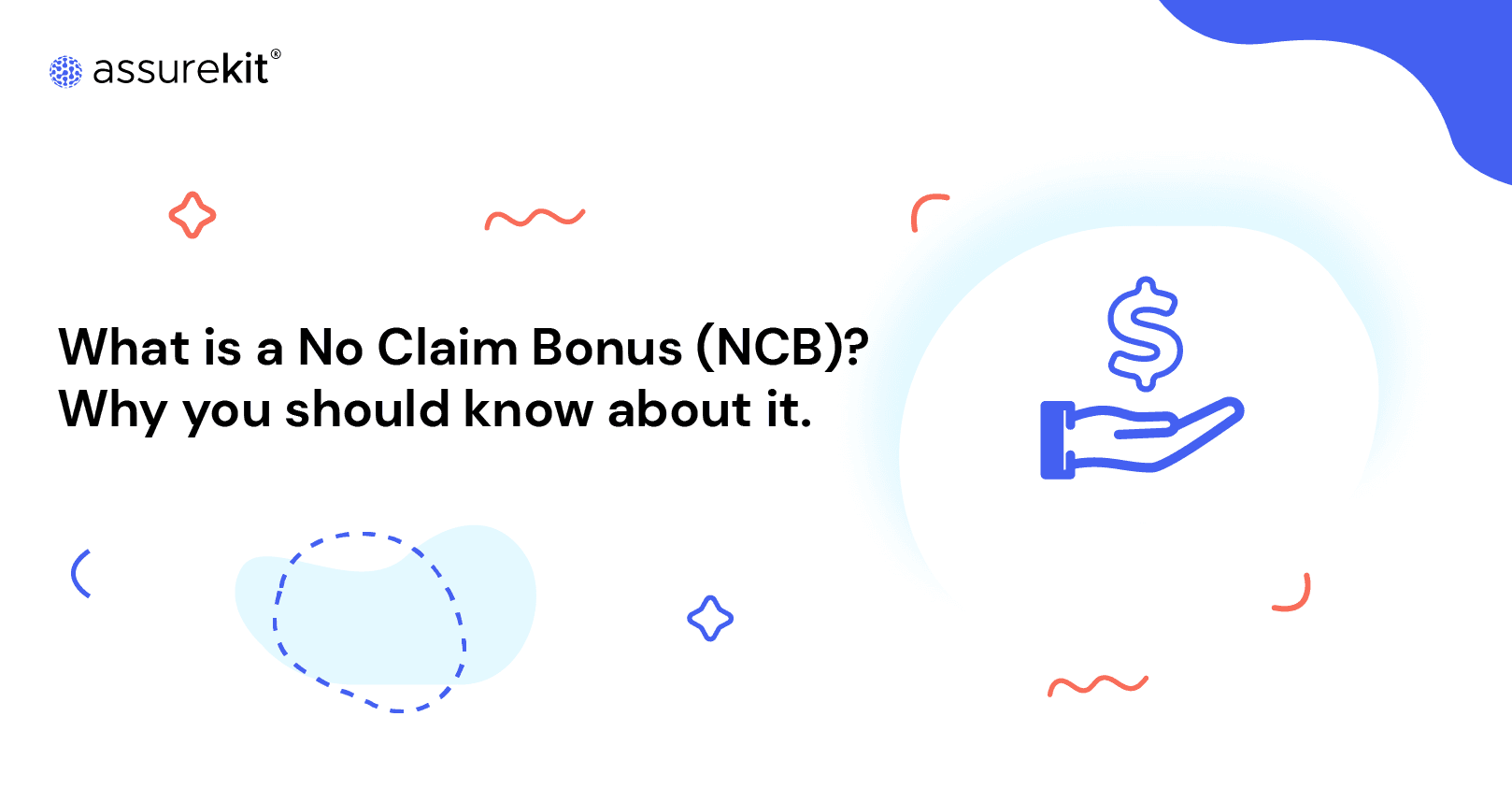Top Trends in InsurTech in India you should pay attention to 2021
16-Apr-2021
Fintech


2020 was a revolutionary year for the insurtech sector. As the Covid pandemic raged around the world, inquiries for health insurance rose by about 30-40%. In a time like this, Insurance could not be sold offline, (which is how insurance used to be majorly sold). This led to a fast-paced adoption of digital platforms in the insurance industry. Technology stepped in to fill the gap that the pandemic caused and changed the way the insurance business works forever. Since the dotcom bubble, the insurtech space has been growing at a rapid pace. However, it has a long way to go ahead. 2020 has marked itself in the history of insurance in India, which has led to several changes. As we move into 2021 let's take a look at the top 5 trends in the InsurTech space in India that you should pay attention to. #### Top 5 InsurTech trends in India you should know about in 2021 #### 1) Higher penetration of insurance Insurance has been around for decades. In countries like India, insurance was first introduced in the 1860s. Despite being around for so long, insurance penetration in India stands at a dismal 3.69%. Even among the insurers, urban populations and life insurance make up the majority. A key factor in this lack of insurance penetration in India is accessibility. About 96% of all major insurance offices are located in 8-9 major cities in India. The rural population had no access to quality and affordable insurance. Here's where digitization has proved to be a boon. In 2020, the Covid pandemic forced all the big insurance players to go online. Users could pay premiums with digital wallets, customize their plans and even file for claims! All these factors saw the increasing popularity of insurance, in areas where it had never reached before. As we navigate through 2021, the impact of digitization will become apparent. We can already see the rise of this trend in the InsurTech space in India. #### 2) Change in insurance distribution models Insurance is moving to the next level in India. Traditionally, you had to buy a property or a vehicle, and then opt for insurance separately. Digitization and affinity insurance are significantly changing this business model. Affinity insurance is where an insurance plan comes bundled with a good or service. This practice is fast gaining foot. Many businesses today have a large client base, and they have started selling insurance as an attachment product. Many FMCG products today are also selling insurance through retail outlets or online stores. The Point of Sale(POS) model is another model gaining popularity in rural and urban areas. IRDA (Insurance Regulatory and Development Authority) is taking many steps to open up new insurance channels, such as MA's( Medical Assistance), POS and MISP (Motor Insurance Service Provider). These new distribution channels make insurance accessible and cheap, thereby encouraging the general public to buy plans. #### 3) Data-driven insurance The Insurance industry has always been data-driven. The latest technology allows insurers to collect, analyze and use big data to their advantage. Big data is often collected from social media pages, IOT end-devices or even through credit and debit reports. This data helps insurance companies to design customized plans for their users. It also helps insurers to accurately calculate and predict outcomes, thus minimizing the risks. In 2021, insurance companies are trying to use an "on-demand" and "usage-based model". The premium paid by a customer directly reflects the risk associated with the policy. Lower risk users can opt for low premiums, while high-risk users have to pay higher premiums to compensate. #### 4) Undisputable claims Internet of Things (IoT) is the technology of "connected devices". These devices include everything from a customer's smartwatch, sensors to automated voice assistants. Simply stated, IoT devices collect data. Most customers are willing to share this data with their insurers, in exchange for lower insurance premiums. Insurance companies collect this data and use it to their advantage. IoT is booming in 2021. According to an insurance industry report, 20% of insurance companies are currently deploying or testing IoT initiatives. The [IoT insurance market](https://www.globenewswire.com/news-release/2021/02/26/2183171/0/en/The-IoT-insurance-market-is-expected-to-grow-at-a-CAGR-of-40-over-the-forecast-period-2021-2026.html) is projected to grow at a whopping 40% between (2021-2026), to become a 40+ billion dollar industry. Using IoT data helps insurance companies to forecast and mitigate risks, minimise preventable losses, capture user patterns, predict and monitor user behaviour and lead to early fraud detection. A recent study by Forbes concluded that IoT devices reduce customer premiums by up to 25%, and reduce claims for companies by almost 30%. There is no doubt that IoT is one of the top trends in InsurTech in India for 2021. #### 5) Heightened security and privacy A growing trend in the InsurTech space in today’s day and age is the concern for security and data privacy. Furthermore, today, most insurance claims are still subjective to the insurers, and how they perceive the losses. Blockchain is a rising technology that solves both these problems. It introduces the idea of "parametric insurance" with the help of "smart contracts". Parametric insurance is insurance that directly pays out a claim, on the basis of a clearly defined event. **For example - If Dinesh wanted to secure his house, which was near the sea from the rising sea levels, traditional insurances would not suit him.** **However, parametric insurance can cover that gap by considering the reports by experts and give him a cover accordingly. If the sea rises above a certain level Dinesh will be paid his cover.** This model offers several unique advantages. **First**, the data is tamper-proof, and no party can control or manipulate the contract. **Second**, this claim is triggered and designed upon data that can be verified, so there is no bias or unfair claim rejections. **Third**, customers get direct and fast access to their claims, many of which are directly transferred to them. Furthermore, importantly, it builds trust which leads to higher insurance penetration. The blockchain insurance sector is projected to grow by a CAGR of 57% between 2021-2026. This technology can truly turn the tables on how insurance works around the world. #### **Conclusion** Overall, we believe insurance distribution in India is moving to the next level. After the dot-com revolution and the Covid-19 crisis insurance as an industry has to adapt to the change in customer behaviour. With the IRDA taking steps to open up insurance as a business, insurance distribution is certainly getting the boost it requires. These were our top 5 trends in InsurTech in India for 2021. It’s an exciting time for the insurance sector. Insurance Companies should use these emerging trends to their advantage; to deliver faster, secure and improved insurance policies. #### Key Takeaways * Higher penetration of insurance * Change in insurance distribution models * Data-driven insurance * Undisputable claims * Heightened security and privacy **Unique advantages of the model** **First**, the data is tamper-proof, and no party can control or manipulate the contract. **Second**, this claim is triggered and designed upon data that can be verified, so there is no bias or unfair claim rejections. **Third**, customers get direct and fast access to their claims, many of which are directly transferred to them. Furthermore, importantly, it builds trust which leads to higher insurance penetration. The **blockchain insurance** sector is projected to grow by a CAGR of 57% between 2021-2026. This technology can truly turn the tables on how insurance works around the world.
2020 was a revolutionary year for the insurtech sector. As the Covid pandemic raged around the world, inquiries for health insurance rose by about 30-40%. In a time like this, Insurance could not be sold offline, (which is how insurance used to be majorly sold). This led to a fast-paced adoption of digital platforms in the insurance industry. Technology stepped in to fill the gap that the pandemic caused and changed the way the insurance business works forever. Since the dotcom bubble, the insurtech space has been growing at a rapid pace. However, it has a long way to go ahead. 2020 has marked itself in the history of insurance in India, which has led to several changes. As we move into 2021 let's take a look at the top 5 trends in the InsurTech space in India that you should pay attention to. #### Top 5 InsurTech trends in India you should know about in 2021 #### 1) Higher penetration of insurance Insurance has been around for decades. In countries like India, insurance was first introduced in the 1860s. Despite being around for so long, insurance penetration in India stands at a dismal 3.69%. Even among the insurers, urban populations and life insurance make up the majority. A key factor in this lack of insurance penetration in India is accessibility. About 96% of all major insurance offices are located in 8-9 major cities in India. The rural population had no access to quality and affordable insurance. Here's where digitization has proved to be a boon. In 2020, the Covid pandemic forced all the big insurance players to go online. Users could pay premiums with digital wallets, customize their plans and even file for claims! All these factors saw the increasing popularity of insurance, in areas where it had never reached before. As we navigate through 2021, the impact of digitization will become apparent. We can already see the rise of this trend in the InsurTech space in India. #### 2) Change in insurance distribution models Insurance is moving to the next level in India. Traditionally, you had to buy a property or a vehicle, and then opt for insurance separately. Digitization and affinity insurance are significantly changing this business model. Affinity insurance is where an insurance plan comes bundled with a good or service. This practice is fast gaining foot. Many businesses today have a large client base, and they have started selling insurance as an attachment product. Many FMCG products today are also selling insurance through retail outlets or online stores. The Point of Sale(POS) model is another model gaining popularity in rural and urban areas. IRDA (Insurance Regulatory and Development Authority) is taking many steps to open up new insurance channels, such as MA's( Medical Assistance), POS and MISP (Motor Insurance Service Provider). These new distribution channels make insurance accessible and cheap, thereby encouraging the general public to buy plans. #### 3) Data-driven insurance The Insurance industry has always been data-driven. The latest technology allows insurers to collect, analyze and use big data to their advantage. Big data is often collected from social media pages, IOT end-devices or even through credit and debit reports. This data helps insurance companies to design customized plans for their users. It also helps insurers to accurately calculate and predict outcomes, thus minimizing the risks. In 2021, insurance companies are trying to use an "on-demand" and "usage-based model". The premium paid by a customer directly reflects the risk associated with the policy. Lower risk users can opt for low premiums, while high-risk users have to pay higher premiums to compensate. #### 4) Undisputable claims Internet of Things (IoT) is the technology of "connected devices". These devices include everything from a customer's smartwatch, sensors to automated voice assistants. Simply stated, IoT devices collect data. Most customers are willing to share this data with their insurers, in exchange for lower insurance premiums. Insurance companies collect this data and use it to their advantage. IoT is booming in 2021. According to an insurance industry report, 20% of insurance companies are currently deploying or testing IoT initiatives. The [IoT insurance market](https://www.globenewswire.com/news-release/2021/02/26/2183171/0/en/The-IoT-insurance-market-is-expected-to-grow-at-a-CAGR-of-40-over-the-forecast-period-2021-2026.html) is projected to grow at a whopping 40% between (2021-2026), to become a 40+ billion dollar industry. Using IoT data helps insurance companies to forecast and mitigate risks, minimise preventable losses, capture user patterns, predict and monitor user behaviour and lead to early fraud detection. A recent study by Forbes concluded that IoT devices reduce customer premiums by up to 25%, and reduce claims for companies by almost 30%. There is no doubt that IoT is one of the top trends in InsurTech in India for 2021. #### 5) Heightened security and privacy A growing trend in the InsurTech space in today’s day and age is the concern for security and data privacy. Furthermore, today, most insurance claims are still subjective to the insurers, and how they perceive the losses. Blockchain is a rising technology that solves both these problems. It introduces the idea of "parametric insurance" with the help of "smart contracts". Parametric insurance is insurance that directly pays out a claim, on the basis of a clearly defined event. **For example - If Dinesh wanted to secure his house, which was near the sea from the rising sea levels, traditional insurances would not suit him.** **However, parametric insurance can cover that gap by considering the reports by experts and give him a cover accordingly. If the sea rises above a certain level Dinesh will be paid his cover.** This model offers several unique advantages. **First**, the data is tamper-proof, and no party can control or manipulate the contract. **Second**, this claim is triggered and designed upon data that can be verified, so there is no bias or unfair claim rejections. **Third**, customers get direct and fast access to their claims, many of which are directly transferred to them. Furthermore, importantly, it builds trust which leads to higher insurance penetration. The blockchain insurance sector is projected to grow by a CAGR of 57% between 2021-2026. This technology can truly turn the tables on how insurance works around the world. #### **Conclusion** Overall, we believe insurance distribution in India is moving to the next level. After the dot-com revolution and the Covid-19 crisis insurance as an industry has to adapt to the change in customer behaviour. With the IRDA taking steps to open up insurance as a business, insurance distribution is certainly getting the boost it requires. These were our top 5 trends in InsurTech in India for 2021. It’s an exciting time for the insurance sector. Insurance Companies should use these emerging trends to their advantage; to deliver faster, secure and improved insurance policies. #### Key Takeaways * Higher penetration of insurance * Change in insurance distribution models * Data-driven insurance * Undisputable claims * Heightened security and privacy **Unique advantages of the model** **First**, the data is tamper-proof, and no party can control or manipulate the contract. **Second**, this claim is triggered and designed upon data that can be verified, so there is no bias or unfair claim rejections. **Third**, customers get direct and fast access to their claims, many of which are directly transferred to them. Furthermore, importantly, it builds trust which leads to higher insurance penetration. The **blockchain insurance** sector is projected to grow by a CAGR of 57% between 2021-2026. This technology can truly turn the tables on how insurance works around the world.

Ready to level up?

Ready to level up?

Ready to level up?

Assurekit is a full-stack digital insurance platform built for growth, that enables anyone to create, sell and manage contextual insurance products in a plug-and-play manner



©2024 Assurekit technology & service pvt ltd

Assurekit is a full-stack digital insurance platform built for growth, that enables anyone to create, sell and manage contextual insurance products in a plug-and-play manner



©2024 Assurekit technology & service pvt ltd

Assurekit is a full-stack digital insurance platform built for growth, that enables anyone to create, sell and manage contextual insurance products in a plug-and-play manner



©2024 Assurekit technology & service pvt ltd